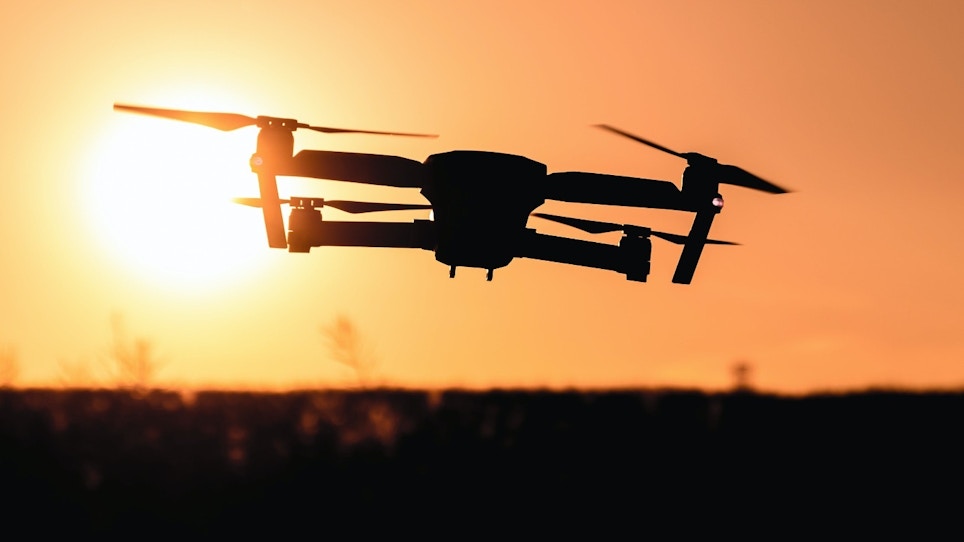The technological revolution continues at light speed, does it not? There are gadgets available for sportsmen today we never envisioned a generation ago. Cell phones, scouting cameras, computer mapping programs, thermal and night-vision optics, laser rangefinders, scopes with laser rangefinders built into them … the list goes on. Both state and federal game managers and hunter’s organizations are struggling to strike a balance between regulations that prevent technology from overwhelming the spirit and tenets of fair chase and the desire of modern-day hunters to use these high-tech gizmos.
And now there are UAV’s (Unmanned Aerial Vehicles), better known as drones.
Drone technology is rapidly advancing. Prices have come down and availability has increased to the point where drones equipped with pretty sophisticated photographic and video capabilities are affordable and readily available. As I learned when living in Alaska and spending a lot of hours in the backseat of a Piper Super Cub, when it comes to spotting game and getting a real feel for the terrain, nothing beats a “vision from above.” You can get that same vision, albeit on a much smaller scale, by using modern drones. The questions are, should you? And, should it be legal?
Admittedly, I have not researched every state’s rules and regulations regarding drone usage as it relates to hunting. Those that I am intimately familiar with all prohibit their use when it comes to spotting game, then going after it. Things get a bit murkier when it comes to scouting for game. For example, in Wyoming, it is illegal to scout or use a drone to aid in taking game from August 1-January 31 — pretty much the entire hunting season. A Colorado Department of Parks and Wildlife (CPW) regulation states that, “It shall be unlawful to use a drone to look for, scout, or detect wildlife as an aid in the hunting or taking of wildlife. For the purposes of this regulation, drone shall be defined as including, without limitation, any contrivance invented, used or designed for navigation of, or flight in the air that is unmanned or guided remotely. A drone may also be referred to as “Unmanned Aerial Vehicle” (UAV) or ‘Unmanned Aerial Vehicle System’ (UAVS).”
On November 18, 1971, the Airborne Hunting Act was adopted by Congress. The act “prohibits shooting or attempting to shoot or harassing any bird, fish, or other animal from aircraft except for certain specified reasons, including protection of wildlife, livestock, and human life as authorized by a Federal or State issued license or permit.” The act states that “the term ‘aircraft’ means any contrivance used for flight in the air.” In today’s world, that also means drones.
But what about recovering wounded game? The CPW’s Heather Dugan said that, “The bottom line is, if it’s related to a hunt in any way, you can’t do it. For scouting, locating, anything. If they fly before they take an animal, they’re illegal. If they use the drone to locate an animal they may have shot and wounded, they’re illegal.”
This is where, to me, the line gets very murky. Some make a very strong argument that it is, in fact, unethical to not use every tool at your disposal to recover an animal you have shot — and that includes drones.
One man making this case is Mike Yoder, an Ohioan who has filed a federal lawsuit making the argument that it is a violation of his First Amendment rights to not allow him to collect and disseminate information on dead or wounded deer he has located with a drone. Yoder started a company, Drone Deer Recovery, which offers to locate wounded deer in more than 15 Midwestern states using thermal imagery taken from drones. In a nutshell, Yoder claims near-100% recovery on wounded deer using a minimally-intrusive drone flying some 400 feet above the ground. Without getting into the weeds, the lawsuit came about because in Michigan, it’s illegal to use drones for recovery, with stiff penalties for those who do.
It’s easy to understand any state’s position that using drones for locating and harvesting game should be illegal. No argument there. But to help recover wounded game? At first blush, this makes total sense. But then you start to see the mission creep, where abusers, poachers, and shady characters would use this same drone technology to illegally locate, then kill, game. If confronted, they’d simply claim they were searching for a wounded animal that one of their cohorts would swear that he shot but could not find. But given wounding rates — defined as deer that were hit but never recovered — on whitetail deer by bowhunters, which studies have shown that can be as high as 20%, and the fact that it is both the moral and ethical thing to do everything we can to recover all animals shot by hunters, Yoder makes a powerful argument.
In an article on agweb.com, Yoder told author Chris Bennett, “It’s like anything else: You’re always going to have bad people that hunt illegally, but they will act regardless of the law. The government is supposed to penalize the lawbreakers — not everyone else, too. There will always, always be technology abusers. At DDR, we stand on professionalism and engage in one thing — carcass recovery. We do it the right way and provide an effective and minimally intrusive means to recover lost game. It works like nothing we’ve ever had in deer hunting history and it is the future for all the right reasons, but the only one that can’t see that is the government.”
Time will tell. What’s your take? Drop me a note at editor@grandviewoutdoors.com and let me know. I’d love to hear from you.






